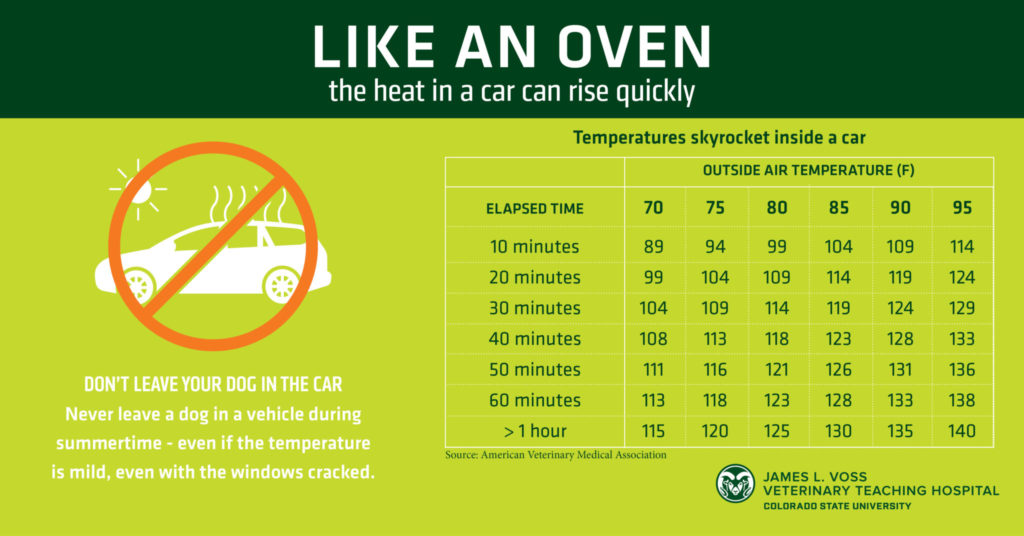Prevent dog heatstroke
Military working dog handlers will tell you their greatest K9 first aid priority is to prevent dog heatstroke. On this first day of summer, MWDTSA is honored to share the following safety information from Colorado State University’s James L. Voss Veterinary Teaching Hospital, reprinted with permission of the author.
Never leave a dog in a vehicle in the sun, even if the temperature is mild and the windows are open. In a matter of minutes, a K9 can become overheated while exercising, playing or just by being left in the heat with no water or shade. Heat exhaustion can quickly become a life-threatening heatstroke, which can cause organ failure and death.
Always provide access to fresh water and shade – especially in the heat of the day.
Obesity and pre-existing medical conditions put pets at much higher risk of heat exhaustion and heatstroke. Puppies, elderly dogs, and dogs with dark-colored or long-haired coats are more at risk, and flat-faced breeds, including bulldogs and pugs, are more susceptible to overheating.
If you are concerned about a pet (or person) that is locked in a hot car, contact your local law enforcement. The Colorado legislature passed a law in 2017 that provides immunity from prosecution for civilians who break into a locked vehicle to rescue a dog, cat, or at-risk person.
Signs of heat exhaustion
- Restlessness and agitation
- Heavy panting and rapid breathing
- Excessive drooling that then turns to thick tenacious saliva
- Bright red gums and tongue
- Dry tacky gums and mucous membranes
- Weakness or struggling to maintain balance
- Vomiting or diarrhea
- Body temperature of 104 degrees or greater
- Elevated heart rate (tachycardia)
- Confusion or disorientation
Signs of dog heatstroke
- White or blue gums
- Labored, noisy breathing
- Frantic panting or wheezing
- Rapid heart rate and drooling
- Uncontrollable urination and or defecation
- Vomiting or diarrhea
- Lethargy or unwillingness to move
- Lack of coordination
- Unconsciousness
What to do if a dog is suffering from heatstroke
- Move the animal to shade or a cooler environment
- Provide cool, fresh drinking water
- Cool the dog down with water or covered ice packs on the belly only
- Do not force-feed water if the pet cannot drink freely on its own
- Do not submerge the pet, this may cause further harm when temperature regulation is impaired
- Do not cover, crate, or otherwise confine the pet
- Even if your dog is responding well to cooling treatments, it is imperative that you contact (and go to) an emergency veterinarian




Leave a Reply
Want to join the discussion?Feel free to contribute!